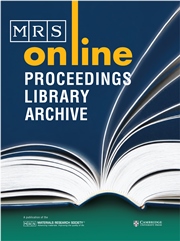Article contents
“Relative Rates Method” for Evaluating the Effect of Potential Geological Environmental Change due to Uplift/Erosion to Radionuclide Migration of High-level Radioactive Waste
Published online by Cambridge University Press: 04 July 2014
Abstract
We have developed a “Relative Rates Method” to make bounding calculations regarding radionuclide migration due to uplift/erosion (“exhumation”) of a HLW repository. Results show that this method can apply to a wide range of different uplift rates and erosion rates. In addition, for the long time period, it was shown that the relative difference of uplift rate / erosion rate and potential hydraulic change arising from extreme uplift/erosion could affect radionuclide release and migration, thus uplift/erosion concerns should be fed back to site selection. Our method provides a credible and defensible basis for analysis and interpretation of possible uplift/erosion impacts for future volunteer sites.
Keywords
- Type
- Articles
- Information
- Copyright
- Copyright © Materials Research Society 2014
References
REFERENCES
- 1
- Cited by


